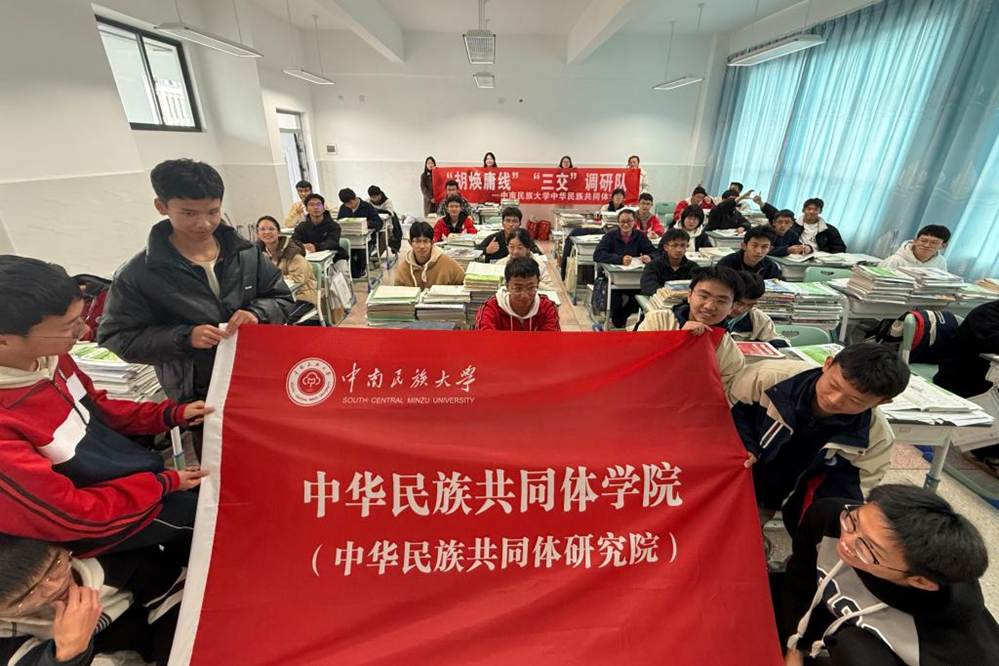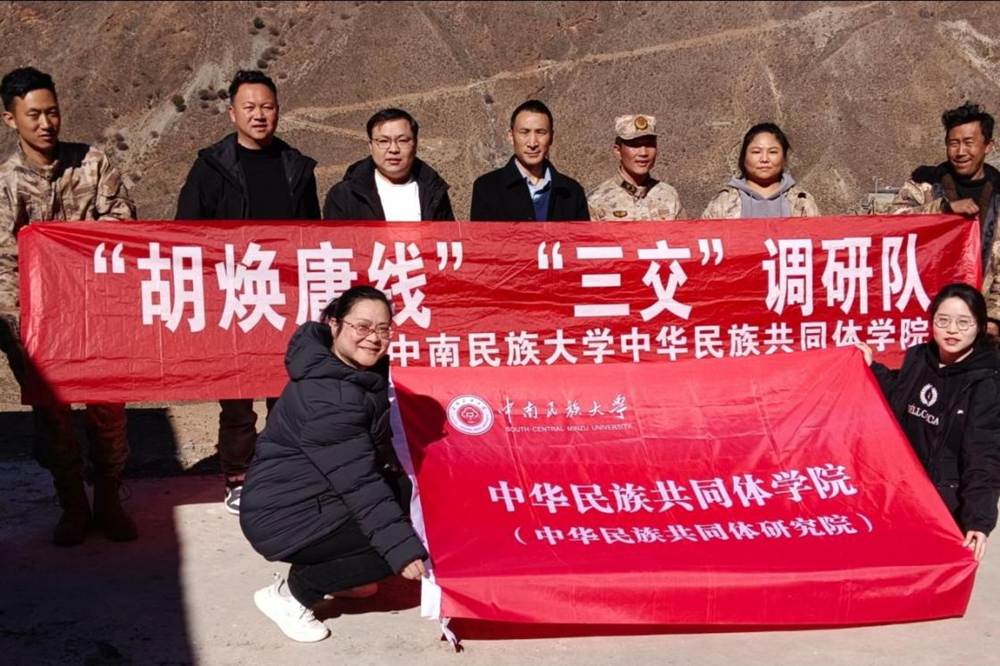SCMU has partnered with Changjiang Daily to organize the “Retracing the Hu Huanyong Line” series of activities, marking the 90th anniversary of the “Hu Huanyong Line” concept and the first Spring Festival since Chinese New Year was listed in UNESCO’s “Representative List of Intangible Cultural Heritage”. In January, SCMU’s School ofCommunity for the Chinese Nation, Youth League Committee, and Party and Administration Office jointly planned these activities with Changjiang Daily.
The kickoff meeting for the social practice activity was held at North Academy on January 3. The meeting was chaired by He Zhan, Party Branch Secretary of the School ofCommunity for the Chinese Nation, with attendance from Chen Dajun, Director of Science and Education News Department of Changjiang Daily, faculty and students from the School, and over 50 students selected through the Youth League Committee.
On January 15 and 18, research team members from the School ofCommunity for the Chinese Nationtraveled to Tengchong in Yunnan Province and Muli Tibetan Autonomous County in Sichuan Province, both located along the “Hu Huanyong Line”. They conducted practical activities with local SCMU students, exploring the history of ethnic “Three Interactions” and drawing inspiration for the new era.

Group photo of the research team at Tengchong National Complete Middle School.
Photo provided by the School ofCommunity for the Chinese Nation
In the Wa ethnic village of Simola in Tengchong, students followed the inspection route of General Secretary Xi Jinping, experiencing firsthand the vibrant practices of various ethnic groups developing together under the Party’s leadership, and gaining deep understanding of Tengchong’s historical context as a multi-ethnic settlement. In Muli, Sichuan, students visited Dacun Village, described as “unique in the world and the only one remaining in China” and one of Sichuan’s most beautiful ancient villages. Through researching local industrial policies, they deeply felt the powerful momentum that ethnic “Three Interactions” bring to rural revitalization.

Group photo at the research site in Muli.
Photo provided by the School ofCommunity for the Chinese Nation
Students expressed that through this research, they gained a deeper understanding of the “Hu Huanyong Line” and the history of ethnic “Three Interactions”, which further inspired their enthusiasm to study and take action to consolidate a strong sense of community for the Chinese nation.
On January 28 (Lunar New Year’s Eve), a livestream relay activity spanning thousands of miles across China and connecting different ethnic groups was successfully held, attracting tens of thousands of online viewers and likes. The livestream, titled “From Ice and Snow to Blossoms: Celebrating Lunar New Year’s Eve”, offered a student perspective on hometown development along the famous “Hu Huanyong Line”. In the festive Spring Festival atmosphere, viewers collectively witnessed China’s development confidence and its soaring strength.
The event was broadcast on multiple platforms including Changjiang Daily’s WeChat video channel, Douyin, Kuaishou, the Great Wuhan client, and SCMU’s WeChat video channel. The National Ethnic Affairs Commission also livestreamed the entire event through its “Dao Zhonghua” platform. During the broadcast, nine SCMU students traveled along the “Hu Huanyong Line” from the icy Heihe to the flowering Tengchong, guiding viewers through local customs and Spring Festival atmospheres. Through this livestream, a vivid “Hu Huanyong Line” gradually unfolded, spanning approximately 25 degrees of latitude and nearly 10,000 kilometers from northernmost Heihe to southernmost Tengchong, showcasing China’s magnificent landscapes and vast territory, as well as the touching scenes of people from all ethnic groups living harmoniously and celebrating the New Year together. The connected hearts and overflowing vitality reached viewers directly through their screens, nurturing more hope and beauty for the coming year.
In recent years, SCMU has focused on consolidating a strong sense of community for the Chinese nation, collaborating with media outlets like Changjiang Daily and “Dao Zhonghua” to continuously plan and implement themed educational publicity series. From “Dialogue Between Youth and Original Aspiration: Finding 21 Original Aspirations at SCMU” to “Visiting Places Where General Secretary Xi Visited Before Spring Festival”, from last year’s “Our Chinese New Year, Our Reunion Dinner” multi-ethnic cultural performance to this year’s “Retracing the Hu Huanyong Line”series, these activities have brought education about national unity to life through immersive experiences, youth-oriented expression, and cross-regional collaboration. These activities not only guide college students to inherit the red gene, cultivate patriotism, and deepen the “Five Identifications”, but also record the contemporary landscape of rural revitalization, cultural inheritance, and border development from a youthful perspective, allowing the belief that “all ethnic groups in China are one family” to take root in this mobile classroom. Today, students from all ethnic groups have become both witnesses to ethnic unity stories and their disseminators and practitioners, measuring the country’s mountains and rivers with their footsteps and interpreting the sense of community through their actions, injecting vibrant youth power into promoting interactions, exchanges and integration among all ethnic groups and building a shared spiritual home for the Chinese nation.